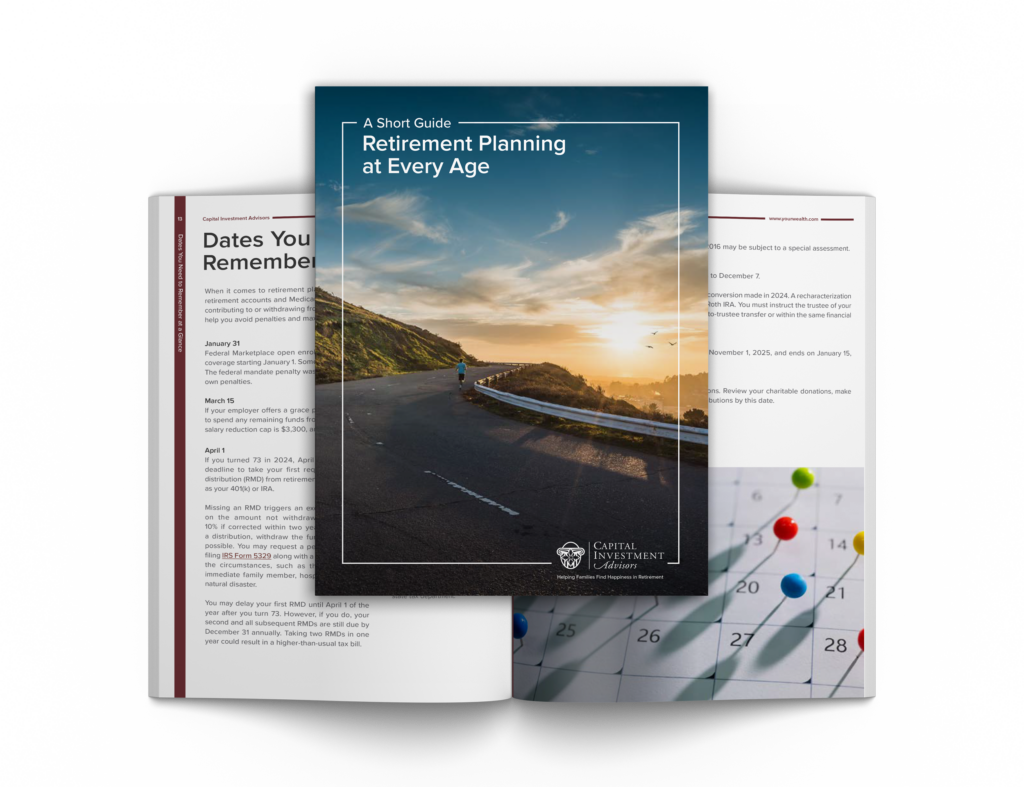A recent Next Avenue article and “Friends Talk Money” podcast episode shared one of the principles from my new book “What the Happiest Retirees Know: 10 Habits for a Healthy, Secure, and Joyful Life.” Specifically, they highlighted my discovery that the happiest retirees generally have at least $500,000 in liquid assets — money in things that can be sold quickly and easily such as checking accounts, stocks, bonds and mutual funds.
Some Next Avenue readers took issue with this, emphatically, on the Next Avenue Facebook page. So, I’d like to explain what I meant.
This $500,000 inflection point is an amalgamation of my extensive surveys of retirees and near-retirees. It also relates to my 1,000-Bucks-a-Month Rule, which stipulates that for every $1,000 in monthly income you want in retirement, you need to have saved $240,000.
The math behind that formula: $240,000 x 5% (your annual withdrawal rate from your retirement savings) = $12,000. Then, divide that by 12 months to reach the $1,000 for the month. Doubling that for breathing room, and giving folks $2,000 per month, brought the total to roughly $500,000.
What Next Avenue Readers Said
Judging by some of the Facebook comments, quite a few people felt $500,000 was too lofty a goal.
Juliet posted (I presume sarcastically): “Terrific advice: Just get hold of half a million if you want to be happy.”
Mary wasn’t having it either: “Well duh!! Who wouldn’t be happy with $500,000?”
Delores was defiantly confident: “I surely intend to find happiness in retired life without having $500,000 at my fingertips…Jeez.”
Rather than disagree, I want to use this as an opportunity to tell Juliet, Mary, and Delores that I hear what they are saying. I know it’s not easy to save $500,000. Roughly half of all U.S. workers and 36% of retirees have less than $10,000 in household savings and investments, according to the Employee Benefit Research Institute. But I do believe $500,000 is more attainable than some people think.
Running the Numbers
The first step toward reaching this goal is to create a pre-retirement budget.
For three months, be very intentional about tracking your spending. I recommend what I call the TSL (Taxes, Savings, Life) budget. With this technique, approximately 30% of your income is allocated for taxes, 20% for savings and investments and 50% for life (all the necessities and fun!).
To keep the numbers in perspective, it’s important to understand what I call the Rich Ratio: my system of making sure you’re living within your means. The Rich Ratio is a straightforward way to measure the amount of money you have in relation to the amount of money you spend.
To get this number, first calculate your total monthly income. If you’re still working and looking for the ratio you’ll likely have during retirement, use projected values. Remember to consider all possible retirement income streams — paychecks from part-time work, Social Security, any pension benefits, rental income, miscellaneous sources and the amount your investments should produce. Make sure to adjust this number for taxes, so you have “net income.”
Next, calculate your needs using your projected monthly retirement budget. With these two numbers, your equation looks like this: Have ÷ Need = Rich Ratio. A Rich Ratio greater than 1 is fantastic. Anything under that means there’s room for improvement.
Let’s say you’ll generate $4,000 per month (after taxes) and only need $2,000 to meet your obligations, giving you a Rich Ratio of 2. Fantastic!
Conversely, if Jeff Bezos generates $80 million per month (after taxes) and needs $160 million to pay his bills, his Rich Ratio would be 0.5. Yikes! Forget joyriding through space, he might not even be able to afford an Amazon Prime membership.
Another useful method is my Fill the Gap (FTG) strategy. Here, you figure out your income and your monthly spending to find your gap. Then, use the1,000-Bucks-a-Month Rule to fill that gap.
How Much Will You Need?
While $500,000 is a great number to have in retirement, its importance really depends on how much you’ll need. For instance, if you’re able to continue working part-time in retirement, you won’t need as much saved before you get there.
The happiest retirees, according to my surveys, find a way to make part-time work an additional income stream and an activity they’re passionate about.
Think of money as a river, not a reservoir. The more tributaries, the stronger the flow.
In the same article and podcast that got me in trouble, financial adviser and author Tony Hixon told Next Avenue Managing Editor Richard Eisenberg that retirement is not just about checking quantitative boxes. It’s also, he said, about “ensuring not only that they (retirees) have enough money to sleep at night, but enough purpose to get up in the morning.”
I agree. In my surveys and book, I note that the happiest retirees have a number of things beyond $500,000 or more in liquid assets: core pursuits (hobbies on steroids), a healthy marriage (if they’re married), faith, a commitment to charity, social connections, good physical health, smart housing decisions, a calm investor behavior and smart spending habits. All of these create the purpose Hixon talks about.
Spoiler alert, no one is going to check every box in retirement. I agree with Tony Hixon that the ultimate goal is happiness. I’m just saying that the less money you have, the harder you might have to work to get there.
The vast majority of the happiest retirees I studied don’t have millions upon millions in retirement savings. But they were still able to stop working full-time and live joyful, fulfilling lives. I hope you can, too.
If you haven’t yet begun saving, don’t let it get you down. There’s no time like the present, so even if you start small, just start. That’s how healthy retirement accounts are built – with time, patience, and intention.
Read the full Forbes article here
This information is provided to you as a resource for informational purposes only and is not to be viewed as investment advice or recommendations. Investing involves risk, including the possible loss of principal. There is no guarantee offered that investment return, yield, or performance will be achieved. There will be periods of performance fluctuations, including periods of negative returns and periods where dividends will not be paid. Past performance is not indicative of future results when considering any investment vehicle. This information is being presented without consideration of the investment objectives, risk tolerance, or financial circumstances of any specific investor and might not be suitable for all investors. This information is not intended to, and should not, form a primary basis for any investment decision that you may make. Always consult your own legal, tax, or investment advisor before making any investment/tax/estate/financial planning considerations or decisions. Investment decisions should not be made solely based on information contained in this article. The information contained in the article is strictly an opinion and for informational purposes only and it is not known whether the strategies will be successful. There are many aspects and criteria that must be examined and considered before investing.










